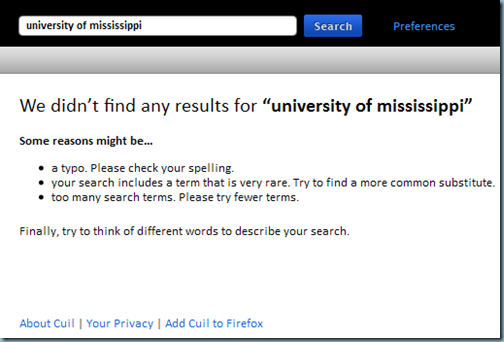A recent CNET headline proclaimed, “For teens, the future is mobile.” DUH! A quick look around confirms that for teens, the NOW is mobile. Anyone who watches and talks to cell phone-wielding teens knows that they love their cell phones. Many prefer texting over actually talking to someone. The story also reports a prediction that mobile phones will surpass the popularity of desktop computers for U.S. teens. Again, no big surprise. In fact, we may already be there.
The story did bring out one point that is well worth noting. Bill Carter of the marketing agency, Fuse, predicts, ” . . . mobile phone providers likely won’t succeed as the entertainment leaders for the phone, despite their efforts to sell ringtones, games, and music. Other companies like Apple, Google, and Yahoo will be more effective at ‘side-loading’ the cell phone with services.” I think this is an important trend to follow, both for consumers and libraries.
(Olsen, Stefanie. “For teens, the future is mobile.” CNET News. July 15, 2008. Available at http://news.cnet.com/8301-1023_3-9991979-93.html.)
As I’ve noted elsewhere, my current phone is a Palm Treo. I’ve customized my phone with a number of applications that meet my needs. In contrast, one of my biggest gripes with the original iPhone was that Apple intentionally blocked users from truly making the device their own with specialized applications. Happily Apple has remedied this unfortunate situation with the introduction of the app store.
But what does this trend hold in store for libraries? What custom applications might library users need? When I started thinking about this, the first thing that came to mind was not an application at all. I started thinking about the library website. Just how well does your website play with mobile phones? If you’re not sure, just try browsing your website and searching your library catalog on your cell phone. If you think your website and catalog pass the test, start trying some of your databases. It really gets ugly there! Libraries need websites and catalogs that load quickly and work well with mobile devices. Handheld users don’t exactly have the fastest connection after all! But how about those databases on a mobile device? Ugly, ugly, ugly! So . . . perhaps a nice, clean, elegant widget for searching various library databases.
Beyond that, what else might a library user want to do with a cell phone? Bibliographic citation manager perhaps? How about a way to deliver due dates for checked-out items directly to the cell phone calendar? Stream audio and video content from the library’s media collection? Easily store e-books on the phone for reading later? Or let’s just get basic. How about texting with a reference librarian? Yes, I know that some libraries already do this, but maybe not enough of us are. If that is the preferred communication medium for our users, maybe we should explore it a little more.



